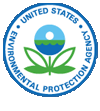
EPA Awards Grants to Reduce Indoor Pollutant Exposure, Protect Public Health / Eight organizations in Calif., DC, Ill., Kan., Ky., and Md. receive funding to minimize exposure to indoor pollutants
The U.S. Environmental Protection Agency (EPA) recently awarded funding
to eight organizations throughout the United States to protect public
health by reducing exposure to indoor pollutants, such as radon, and environmental
asthma triggers commonly found in homes, schools, offices and other large
buildings. Through a competitive grant process, EPA is providing $4.5
million in funds to ensure Americans, especially in low-income, minority
and tribal communities, are able to reduce their exposure to indoor pollutants
and safeguard their families’ health.
“Partnering with these leading organizations will increase national
awareness on the importance of healthy indoor air quality in our changing
climate and will empower communities to implement public health projects
locally,” said Janet McCabe, acting assistant administrator for
the Office of Air and Radiation.
“With these agreements, EPA advances our commitment to communities by providing financial and technical assistance so they can take action to prevent lung cancer, asthma episodes and other respiratory diseases.”
Americans spend up to 90 percent of their time indoors, making indoor air
quality an important public health issue. For example,
radon is the second leading cause of lung cancer in the United States and
asthma affects more than 25 million Americans, including 7 million children,
with poor and minority children suffering a greater burden of the disease.
EPA will collaborate with the recipients of the three-year cooperative
agreements to:
- prevent future lung cancer deaths by reducing public exposure to radon by mitigating risks in existing homes and schools and by constructing new homes and schools with radon-reducing features;
- prevent asthma attacks, emergency room visits, and other poor health outcomes by supporting delivery, infrastructure and/or sustainability of environmental asthma interventions at home and school, with a focus on populations disproportionately impacted by asthma; and
- prevent other poor health outcomes through expanded support of state and local efforts to improve indoor air quality by promoting best practices and policies.
The recipients of the “National Indoor Environments Program: Reducing Public Exposure to Indoor Pollutants” cooperative agreements are:
-
· American Lung Association, Washington, DC
· American Lung Association of the Upper Midwest, Springfield, Ill.
· America’s Health Insurance Plans, Washington, DC
· Conference of Radiation Control Program Directors, Frankfort, Ky.
· Environmental Law Institute, Washington, DC
· Kansas State University, Manhattan, Kan.
· National Center for Healthy Housing, Columbia, Md.
· Public Health Institute, Oakland, Calif.
For more information on these innovative projects, visit www.epa.gov/iaq .
